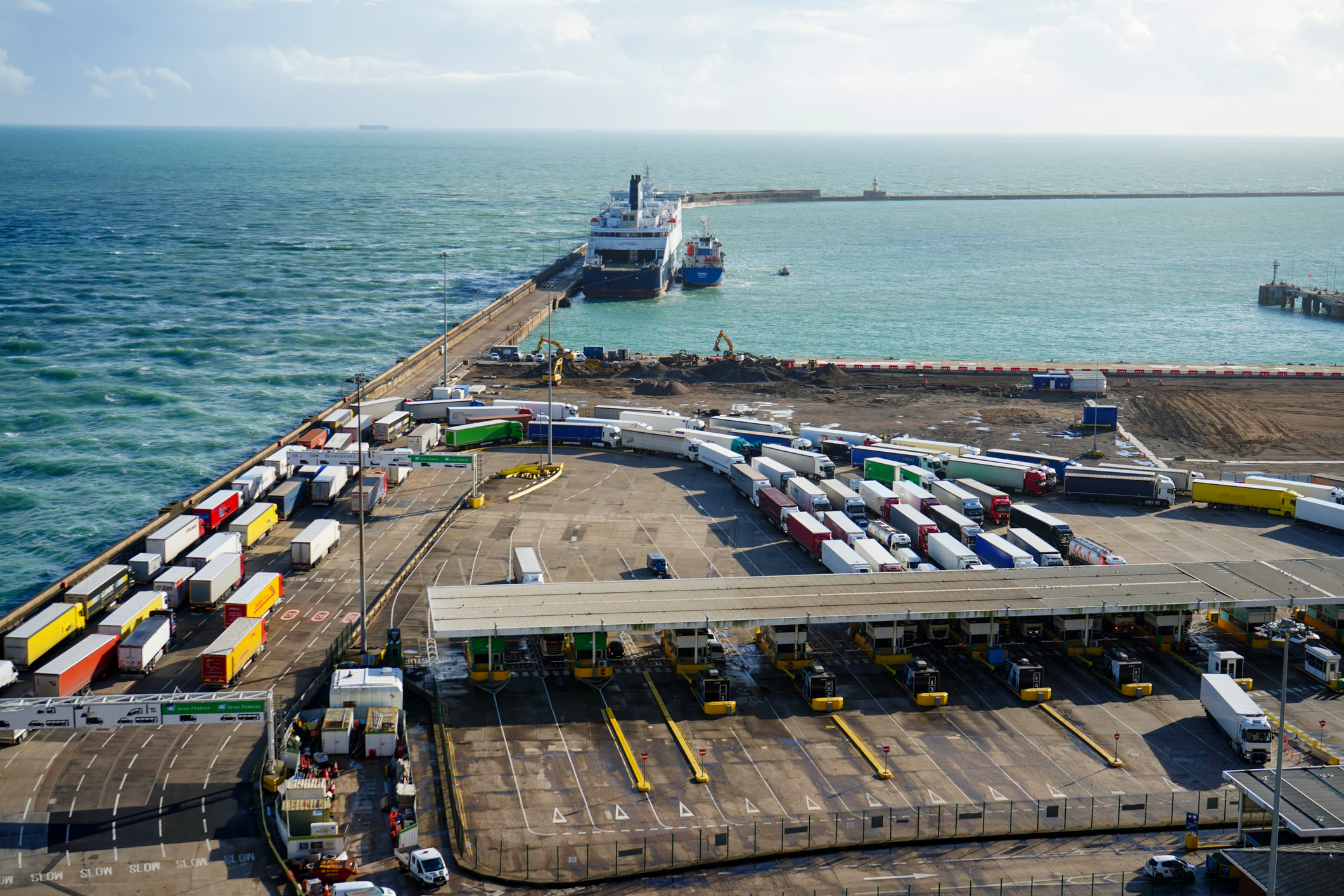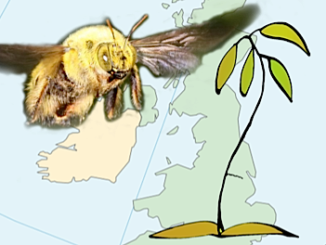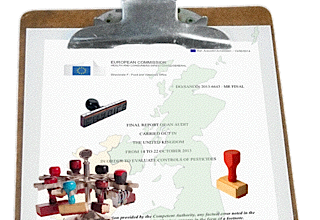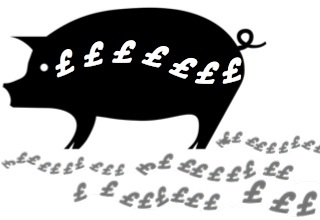
A new regime of border checks for imports to Britain from the EU will come into force at the end of April. Meat, dairy, seeds and other items classified as medium or high-risk will be the first subject to the controls. What does this entail and what is at stake? Marianne Landzettel reports.
Exporting food and agricultural produce to Britain, is this really worth our while? That’s a question businesses in the EU will be asking themselves from the end of this month.
On 30 April, Britain will introduce full border checks for what are considered medium or high-risk products and produce, such as meat and dairy products, animals, seeds and seedlings.
British companies have a fair idea of what’s coming. They have had to deal with stringent export rules since Britain left the single market in 2021. For exports to the EU, phytosanitary certificates and a host of other documents are needed for everything from food products to secondhand agricultural machinery.
Since January of this year, Britain requires health and phytosanitary certificates for high and medium risk plant and animal imports from the EU. The next phase will begin on 30 April with the rollout of physical checks.
Britain postponed physical checks five times since leaving the EU single market in January 2021. Doing so indefinitely is not an option: since Brexit WTO ‘third country’ rules apply. Not requiring phytosanitary documentation and exempting goods from physical checks would provide an ‘unfair advantage’ to EU member states.
An open door for disease?
From 30 April, plant and animal imports will be checked at the new £147 million control station in Sevington, 35km inland from the Port of Dover.
Because of fears that ASF (African Swine Fever, a disease that is rapidly spreading across Europe) could be introduced into Britain through illegal meat imports, in September 2022 the government ordered spot checks to be conducted at Dover. Since then, the Dover Port Health Authority (DPHA) has confiscated over 57 tonnes of illegal meat, some of it not packed or properly cooled.
In a letter to the government, Lucy Manzano, head of the DPHA wrote: “Moving the checks inland will undermine our entire British border and biosecurity system, creating an open door for disease and food fraud.”
With the introduction of checks at Sevington, the government has withdrawn funds for the checks at the port. For Manzano that amounts to an open-door policy for smugglers who, she says, are unlikely to self-present in Sevington.
Clueless and unprepared
“There’s been a lot of concern that there hasn’t been enough engagement with EU member states to get them ready,” Tom Southall, the executive director at the Cold Chain Federation, the UK’s trade association for the temperature controlled logistics industry, told The Guardian. He fears many EU suppliers will be unable to send goods to the UK because they simply aren’t ready.
The British Meat Processors Association names another import hurdle importers face: veterinarians have to sign off on the phytosanitary documents, and many are already working at capacity, and weekend cover is likely to be a problem. That’s an issue because meat importers will have to give 24 hours notice before a delivery is scheduled to reach the border control point.
Given the volumes of vehicles arriving by ferry and through the tunnel, delays are possible even if checks are carried out round the clock. And any delay will reduce the shelf life and thereby the value of fresh produce markedly.
Exploding costs
Importers will have to pay a ‘common user charge’ of £10 to £29 for each commodity line coming through Sevington. For consignments with five or more commodity lines the fee will be capped at £145.
Analysis by a British trade body has shown that since the UK left the single market, over 850,000 phytosanitary certificates have been requested by exporters. Each costs about £200 to complete which adds up to £170 million in additional costs. Not to mention the need to recruit more staff, invest in IT systems or, in the case of secondhand machinery dealers, building a washing area: it takes at least a day to clean a tractor to meet phytosanitary requirements, for a combine two people need about a week.
EU companies, particularly ones producing small volumes of high value food items, might decide that from now on exporting to the UK is not worth the additional costs and hassle.
Fruit and veg are next
Riverford is a farmer and employee-owned British company that delivers some 65,000 organic veg boxes a week to customers in England.
“Fruit and veg used to be classified as low risk,” says Dale Robinson, in charge of supply chains at Riverford. “In January, DEFRA (the Department for Environment, Food and Rural Affairs) suddenly declared fruit and veg to be ‘medium risk’ although for now it would effectively still be treated as ‘low risk’”.
Full phytosanitary checks are scheduled to begin in October, but “we get absolutely no information,” says Robinson who first heard about the ‘common user charge’ on the news at the beginning of April.
Not all fruit and veg needed for the boxes can be grown in the UK, particularly in spring, much has to be imported from Spain, Italy and France. Robinson has calculated that imports coming through Dover would cost Riverford an additional £1,000 a week. Some shipments come through Portsmouth where no decision on handling costs has been taken yet.
Closest to Riverford is Portsmouth harbour, which in future may or may not be able to handle fruit and veg imports. Even though there are still five months to prepare, Robinson doubts that phytosanitary certificates can be issued at the rate and speed needed.
In particular imports from Spain will be a problem given the sheer volumes going to Britain – at times, an estimated 80% of many salad and vegetable crops on UK supermarket shelves come from the south of Spain. Growers deliver produce to export hubs where consignments for different destinations are packed. There just won’t be enough staff to deal with all the additional paperwork, says Robinson.
And any delay at the border could be catastrophic – on a hot day it takes just a few hours and a bit of mishandling to turn a lorry full of lettuces into mush. Robinson is too busy to get stressed about the crisis he might face in October. At the end of April we will see how the new system pans out for meat and dairy products, he says.
There will either be long delays in Sevington, and empty shelves in the shops, or the lorries will simply be waved through. In an election year the latter seems a probable option.
Northern Ireland and the border in the Irish Sea
We often just speak of Great Britain when we actually mean ‘The United Kingdom of Great Britain and Northern Ireland’. It’s therefore easy to forget that despite Brexit, Northern Ireland is aligned with and has access to the European single market.
The reason for this lies in the 1998 Good Friday (Belfast) Agreement, the Northern Ireland peace process, and the principle that there should be no hard border between Northern Ireland and the Republic of Ireland.
Until recently, all goods delivered from the British mainland to Northern Ireland had to undergo the same checks as goods exported to the EU. In other words: a ham and cheese sandwich assembled in a facility in England needed two phytosanitary certificates – one for dairy and one for meat products – before it could go on sale in Northern Ireland.
After lengthy negotiations between the British government and the EU, the Windsor Agreement was signed in February of 2023. Meat and some dairy products can now be delivered to Northern Ireland without additional checks and paperwork if they are labelled ‘Not for EU’.
Other products are to follow suit, and from October 2024 the labelling rule will apply UK wide to prepacked meat and dairy products. Unionists insisted on the measure in order to ensure businesses can’t save costs by avoiding to mark and deliver goods to Northern Ireland only.
Food manufacturers are not happy. Running two product lines, one with and one without the label for export, and providing storage space adds a lot of cost, even for businesses whose brands have never been available in Northern Ireland. Customers aren’t all happy either. To some the “not for EU” label seems to suggest that the quality and standard of production is not as good as for a product deemed suitable for sale in the EU.
More
Let’s Talk About Food! The UK Project Starting National Conversations





